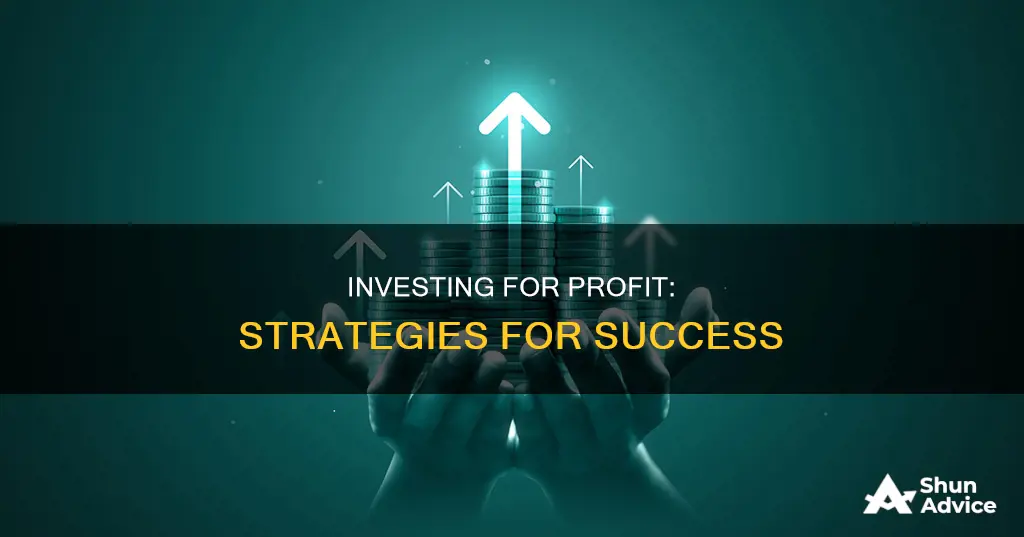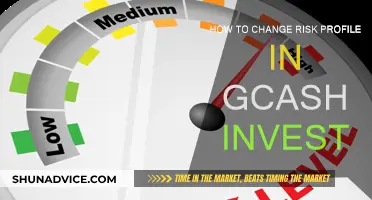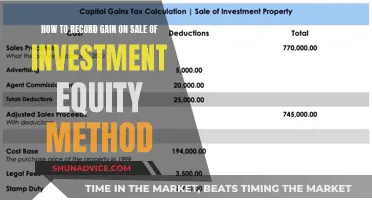
Making money through investing is a long-term game. While it is possible to make quick profits by trading stocks, investing is a slower process that requires time, patience, and consistency.
There are two main ways to make money through investing: by purchasing an asset like stocks, bonds, mutual funds, exchange-traded funds (ETFs), or real estate, and selling it for a profit if its value increases; or by purchasing assets that pay an income, such as bonds, certificates of deposit, dividend stocks, and real estate investment trusts (REITs).
The amount of money made or lost through investing depends on several factors, including the type of investment, the level of risk, and the length of time the investment is held. Diversifying investments across different assets and industries can help minimize risk.
It is important to note that investing carries risks and does not always result in profits. However, with the right strategies and a long-term perspective, investing can be a powerful way to build wealth.
| Characteristics | Values |
|---|---|
| Investment types | Stocks, bonds, mutual funds, exchange-traded funds (ETFs), real estate, REITs, cryptocurrencies |
| Investment income | Interest, dividends |
| Investment appreciation | Capital gains |
| Investment accounts | 401(k), Roth IRA, traditional brokerage account, SEP IRA, Solo 401(k), traditional IRA |
| Investment strategies | "Buy and hold", dollar-cost averaging, diversification |
What You'll Learn

High-yield savings accounts
The average national rate for savings accounts is 0.41% APY (Annual Percentage Yield), but high-yield savings accounts can offer up to 10 times that rate or more. For example, if you deposit $10,000 into a savings account with a 5% APY, you could earn around $500 in interest over a year.
When choosing a high-yield savings account, it's important to look for accounts with competitive APYs, no monthly service fees, and easy access to your money when you need it. Some accounts may also have minimum deposit requirements, so be sure to check for any restrictions.
It's also important to note that high-yield savings accounts typically have a variable APY, which means the interest rate can fluctuate over time. However, your money is generally safe in these accounts, as they are federally insured by the FDIC or NCUA for up to $250,000 per depositor and per account ownership category.
- BrioDirect High-Yield Savings Account: 4.55% APY, $5,000 minimum deposit
- LendingClub LevelUp Savings Account: 4.50% APY, no minimum deposit
- Varo Savings Account: 5.00% APY on balances up to $5,000 with direct deposits of at least $1,000 per month
- Community Financial Credit Union High Yield Savings Account: 10.00% APY on up to $1,000; 0.10% APY on balances above
Uber Investment Guide for Indians: Strategies and Steps
You may want to see also

Exchange-traded funds (ETFs)
ETFs are a good investment option because they are:
- Easy to buy and sell: You can buy and sell ETFs from an investment firm or online brokerage at any time when the stock exchange is open, at the current market price.
- Diversified: ETFs hold a collection of investments, such as stocks or bonds owned by a group of investors, which helps to smooth out the ups and downs of investing.
- Liquid: ETFs are more liquid (easy to buy and sell) than mutual funds.
- Low-cost: ETFs have fees that are typically lower than those of mutual funds.
- Open a brokerage account.
- Choose your first ETFs: For beginners, passive index funds are generally the best option as they are cheaper than their actively managed counterparts.
- Let your ETFs do the hard work for you: ETFs are generally designed to be maintenance-free investments, so it's best to leave them alone to produce excellent investment growth over long periods.
You can make money from ETFs by selling them at a higher price than you bought them for, and many ETFs also pay out dividends from the underlying stocks or other assets in the bundle.
ETFs in India: Worth Investing or Not?
You may want to see also

Dividend stocks
However, if you want to build a portfolio of individual dividend stocks, here are some steps you can take:
- Find a dividend-paying stock: You can look for these on many financial sites, as well as on your online broker's website.
- Evaluate the stock: Compare the dividend yields among its peers. A much higher dividend yield could be a red flag. Also, look at the stock's payout ratio, which tells you how much of the company's income is going towards dividends. A payout ratio above 80% means a large percentage of income is being used for dividends.
- Decide how much stock you want to buy: You need diversification if you're buying individual stocks. Determine what percentage of your portfolio goes into each stock.
It's important to remember that dividends in taxable brokerage accounts are taxed in the year they occur. For investors with taxable accounts and high-income brackets, dividend stocks might not be the best option.
The best dividend stocks are not necessarily those with the highest yield. A high dividend yield can indicate falling stock prices or that the company is going into debt to pay dividends. These companies may eventually be forced to cut dividends.
The average dividend yield of some of the top dividend stocks is 12.69%. Some examples of companies that pay dividends include Exxon, Target, IBM, Sherwin-Williams Co., and Johnson & Johnson.
Foreign Direct Investment: Boon or Bane for India?
You may want to see also

Robo-advisors
One of the main advantages of robo-advisors is their low cost. They are much cheaper than traditional financial advisors, with annual fees ranging from 0.25% to 0.5% of assets under management (AUM). This makes them an attractive option for investors with a small amount of money to invest. For example, SoFi Invest and Stash only require $1 to use their automated investing service.
In addition to low costs and low account minimums, robo-advisors offer several other benefits:
- Easy account setup: Opening a robo-advisor account is a straightforward process that can often be completed online.
- Automated investment management: Robo-advisors automatically invest and rebalance your portfolio based on your financial goals and risk tolerance.
- Tax-loss harvesting: Some robo-advisors employ tax-loss harvesting strategies to help reduce your tax bill.
- Access to human advisors: Some robo-advisors offer hybrid services, providing access to human financial advisors for an additional fee.
However, there are also some disadvantages to consider before choosing a robo-advisor:
- Limited investment choices: Robo-advisors typically offer a preselected list of investment options, and investors may not have the discretion to choose their own investments.
- Lack of personalisation: The algorithms used by robo-advisors may not be able to adapt to complex or unique financial situations.
- No guarantee of performance: Like any investment, there is a risk of losing money when using a robo-advisor.
- Limited human interaction: Robo-advisors may charge extra for access to human financial advisors.
Overall, robo-advisors can be a good option for investors who want a low-cost, automated approach to investing and are comfortable with a certain level of risk. However, they may not be suitable for investors with complex financial needs or those who prefer a more hands-on approach to managing their investments.
Mastering Investment Projections with Spreadsheets: A Comprehensive Guide
You may want to see also

Mutual funds
- Decide between active or passive funds: Your first choice is an important one. Actively managed funds are run by professionals who pick investments with an eye toward beating the market. Passive investing, on the other hand, is a more hands-off, increasingly popular approach where investors often choose index funds or ETFs, which carry lower fees.
- Calculate your investing budget: Mutual funds usually have minimum investment amounts, which can range from $100 to $3,000, though some are lower and a few have a $0 minimum. You should also consider how much money you are comfortable investing.
- Decide where to buy mutual funds: You could buy mutual funds directly from the company that created the fund, such as Vanguard or BlackRock, or through a traditional financial advisor, but this may incur additional fees. Most investors opt to buy mutual funds through an online brokerage, which offers a broad selection of funds from a range of companies.
- Understand mutual fund fees: Mutual funds come with various fees that can eat into your returns over time. These include management fees, marketing fees, accounting fees, and transaction fees. A fund's fees might not be easy to identify upfront, but it is worth digging through a fund's prospectus to find out.
- Manage your mutual fund portfolio: Once you have invested in mutual funds, you will want to rebalance your portfolio annually to keep it in line with your diversification plan. It is also important to manage your expectations—different types of mutual funds will bring different returns. Stock mutual funds, for example, carry higher potential returns but also higher risks, while bond mutual funds provide a more stable but lower rate of return.
Remember, investing always carries some level of risk, but mutual funds are typically considered safer than investing in individual stocks since they offer more diversification.
Equity to Partners: An Investment Round?
You may want to see also
Frequently asked questions
The amount of money you need to buy an individual stock depends on how expensive the shares are. Share prices can range from a few dollars to a few thousand dollars. Some brokerages allow you to invest with fractional shares. This means that you can choose a dollar amount and invest that, despite the fact that the share price might be greater than what you have (which means you can owe a fraction of a stock).
If you’re investing through funds, you can allocate a fairly large portion of your portfolio toward stock funds, especially if you have a long time horizon. A 30-year-old investing for retirement might have 80% of their portfolio in stock funds; the rest would be in bond funds. Individual stocks are another story. A general rule of thumb is to keep these to a small portion of your investment portfolio.
In our view, the best stock market investments are often low-cost mutual funds, like index funds and ETFs. By purchasing these instead of individual stocks, you can buy a big chunk of the stock market in one transaction.







